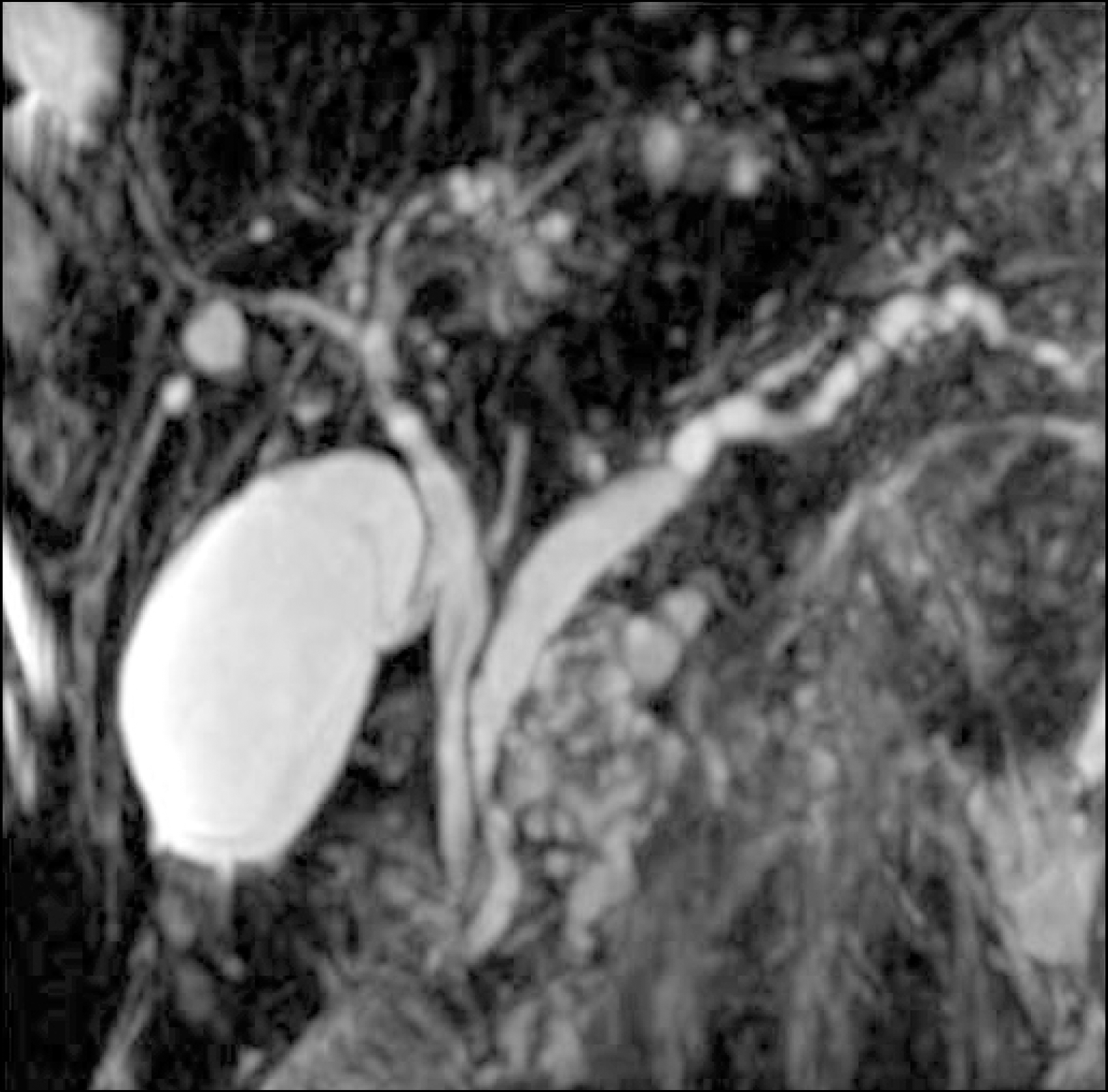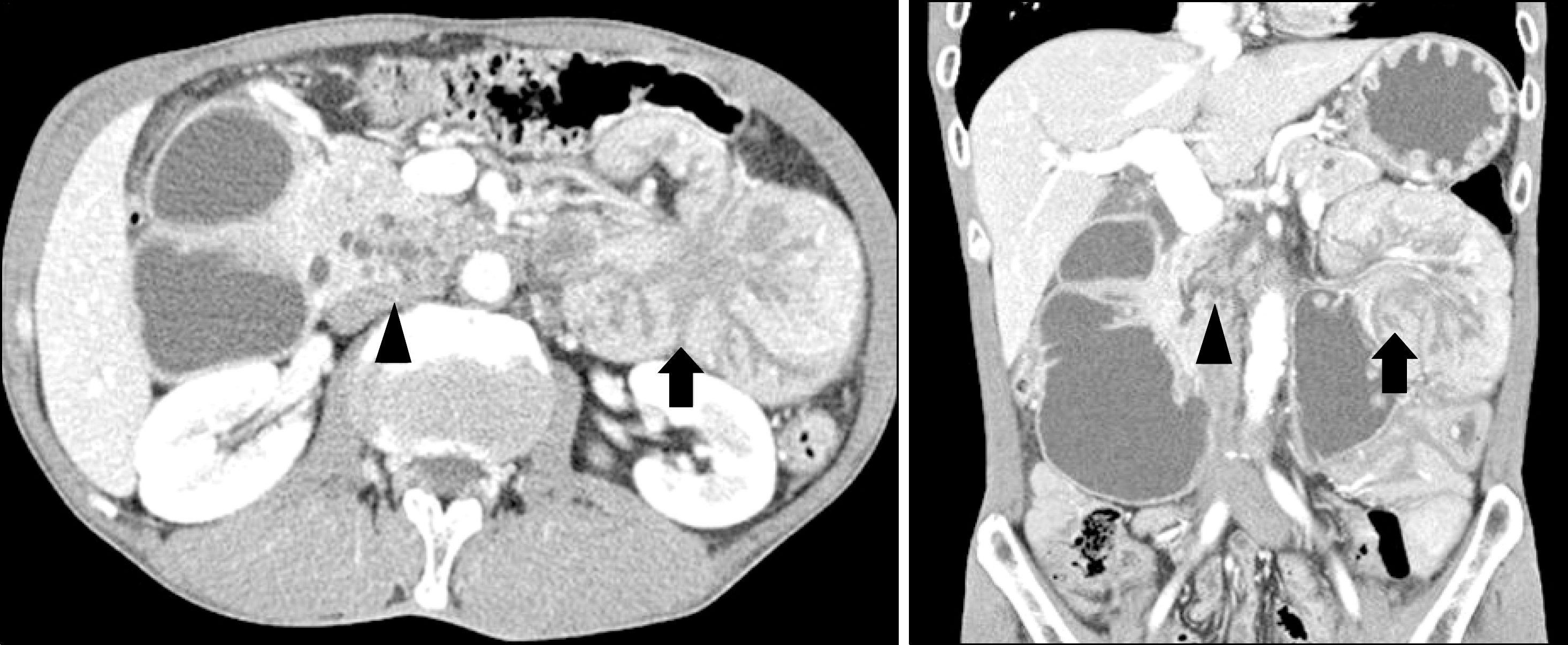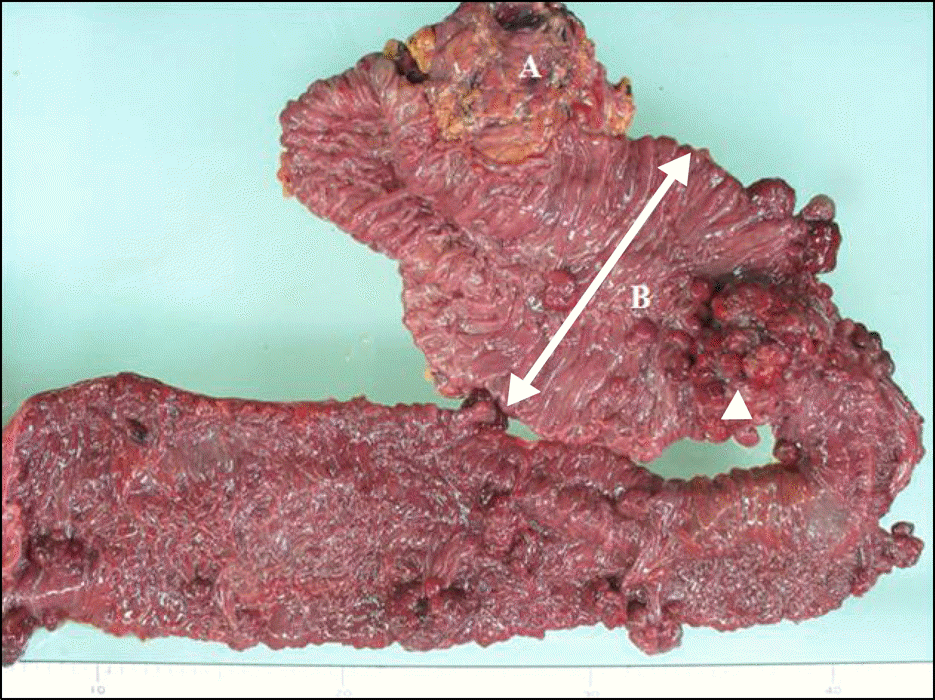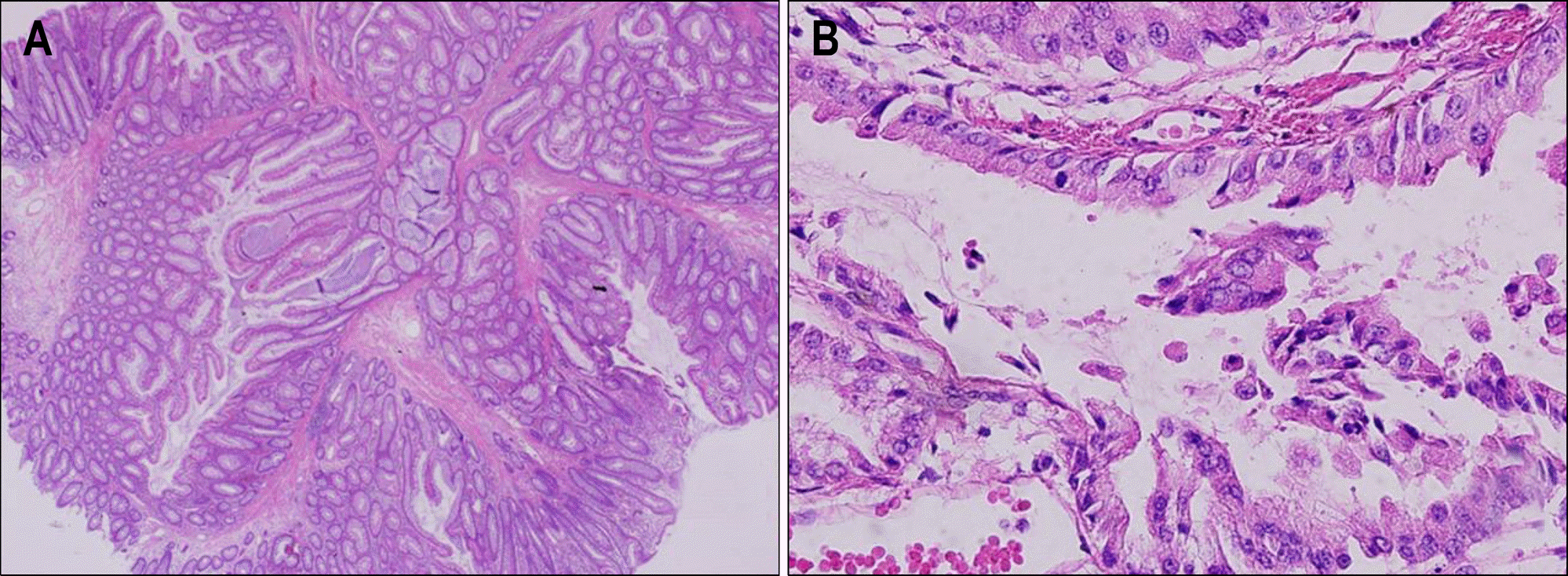Abstract
Peutz-Jeghers syndrome (PJS), which is characterized by multiple hamartomatous polyps of the gastrointestinal tract and mucocutaneous pigmentation, is a rare autosomal dominant disease. This syndrome is often represented as a surgical emergency with complications of the polyps such as intussusception, small bowel obstruction, bleeding, and volvulus. In particular, many studies have reported that patients with this syndrome have a high risk of gastrointestinal or extragastrointestinal malignancy including gastric, duodenal, jejunal, ileal, and colonic carcinoma as well as malignancies involving other organs such as the gallbladder, biliary tract, pancreas, tonsils, breast, and reproductive system. However, there are few reported cases of an association of this syndrome with extraintestinal malignancy. In addition to that, there is no reported case of this syndrome with malignant tumor or intraductal papillary mucinous tumor of pancreas in Korea. We experienced a case of PJS accompanying intraductal papillary mucinous carcinoma of the pancreas, therefore we report this case with literatures reviewed.
REFERENCES
1. Spigelman AD, Arese P, Phillips RK. Polyposis: the Peutz-Jeghers syndrome. Br J Surg. 1995; 82:1311–1314.

2. Chang MS, Kim H, Kim WH, et al. Gastrointestinal polyposis in Koreans: a nationwide survey of clinicopathologic analysis of 112 surgically resected cases. Korean J Pathol. 1998; 32:404–412.
4. Buck JL, Harned RK, Lichtenstein JE, Sobin LH. Peutz-Jeghers syndrome. Radiographics. 1992; 12:365–378.

5. Spigelman AD, Phillips RK. Management of Peutz-Jeghers paient. J R Soc Med. 1989; 82:681.
6. Spigelman AD, Murday V, Phillips RK. Cancer and the Peutz-Jeghers syndrome. Gut. 1989; 30:1588–1590.

7. Song SH, Lee JK, Saw HS, et al. Peutz-Jeghers syndrome with multiple genital tract tumors and breast cancer: a case report with a review of literatures. J Korean Med Sci. 2006; 21:752–757.

8. Peutz JDA. Over een zeer Merkwaardige, gecombineerde fa-miliare polyposis van der de slimjmvliezen van den tracts intestinalis met die van de neuskeelholte en gepaard met ei-gennaardige pigmentaties van huid en slijmvlisen. Nedri Tijd-schr Geneeskd. 1921; 10:134–146.
9. Jeghers H, Mckusick VA, Kata KH. Generalized intestinal polyposis and melanin spots of the oral mucosa, lips and digits. N Engl J Med. 1949; 241:1031–1036.

10. Bruwer A, Bargen JA, Kierland RR. Surface pigmentation and generalized intestinal polyposis (Peutz-Jeghers syndrome). Mayo Clin Proc. 1954; 29:168–174.
11. Mcallister AJ, Richards KF. Peutz-Jeghers syndrome: experience with twenty patients in five Generations. Am J Surg. 1977; 134:717–720.
12. Choi HS, Park YJ, Park JG. Peutz-Jeghers syndrome: a new understanding. J Korean Med Sci. 1999; 14:2–7.

13. Park KS, Jung BY, Cheong SK. A case of Peutz-Jegheres syndrome with intussusception after colonoscopy. Korean J Gastrointest Endosc. 1993; 25:676–680.
14. Foley TR, McGarrity TJ, Abt AB. Peutz-Jeghers syndrome: a clinicopathologic survey of the “Harrisburg family” with a 49-year follow-up. Gastroenterology. 1998; 95:1535–1540.

15. Giardiello FM, Welsh SB, Hamilton SR, et al. Increased risk of cancer in Peutz-Jegher syndrome. N Engl J Med. 1987; 316:1511–1514.
16. Niimi K, Tomoda H, Furusawa M, Hayashi I, Okumura Y. Peutz-Jeghers syndrome associated with adenocarcinoma of the cecum and focal carcinoma in hamartomatous polyps of the colon: a case report. Jpn J Surg. 1991; 21:220–223.
17. Laughlin EH. Benign and malignant neoplasms in a family with Peutz-Jeghers syndrome: study of three generations. South Med J. 1991; 84:1205–1209.

18. Bowlby LS. Pancreatic adenocarcinoma in an adolescent male with Peutz-Jeghers syndrome. Hum Pathol. 1986; 17:97–99.

19. Lynch HT, Smyrk T, Kern SE, et al. Familial pancreatic cancer: a review. Semin Oncol. 1996; 23:251–275.
Fig. 1.
MRCP finding. Complex mass with multiple cluster like cystic lesions suggesting mixed type of IPMN (focal main duct and branch duct) and moderate dilatation of main pancreatic duct with smooth tapering at ampulla of Vater were observed.

Fig. 2.
Abdominal CT finding. Cystic lesions (about 4 cm) in uncinate process of pancreatic head were observed (head arrows) and jejunojejunal intussusception (about 10 cm) due to jejunal polyps was observed (arrows).

Fig. 3.
Macroscopic view of surgical resection specimen. (A) Cluster like mass of pancreatic head was observed. (B) Marked dilatation of porximal jejunum (intussusception site) due to jejunal polyp (head arrow) was noted.

Fig. 4.
Histologic features of jejunal polyp & pancreatic mass. (A) Arborizing bundles of smooth muscle surrounded by small intestinal glandular epithelium was noted (H&E stain, ×40). (B) Papillary ingrowing malignant cell with mucin secreating was found and normal pancreatic islet structure was destructed (H&E stain, ×400).





 PDF
PDF ePub
ePub Citation
Citation Print
Print


 XML Download
XML Download